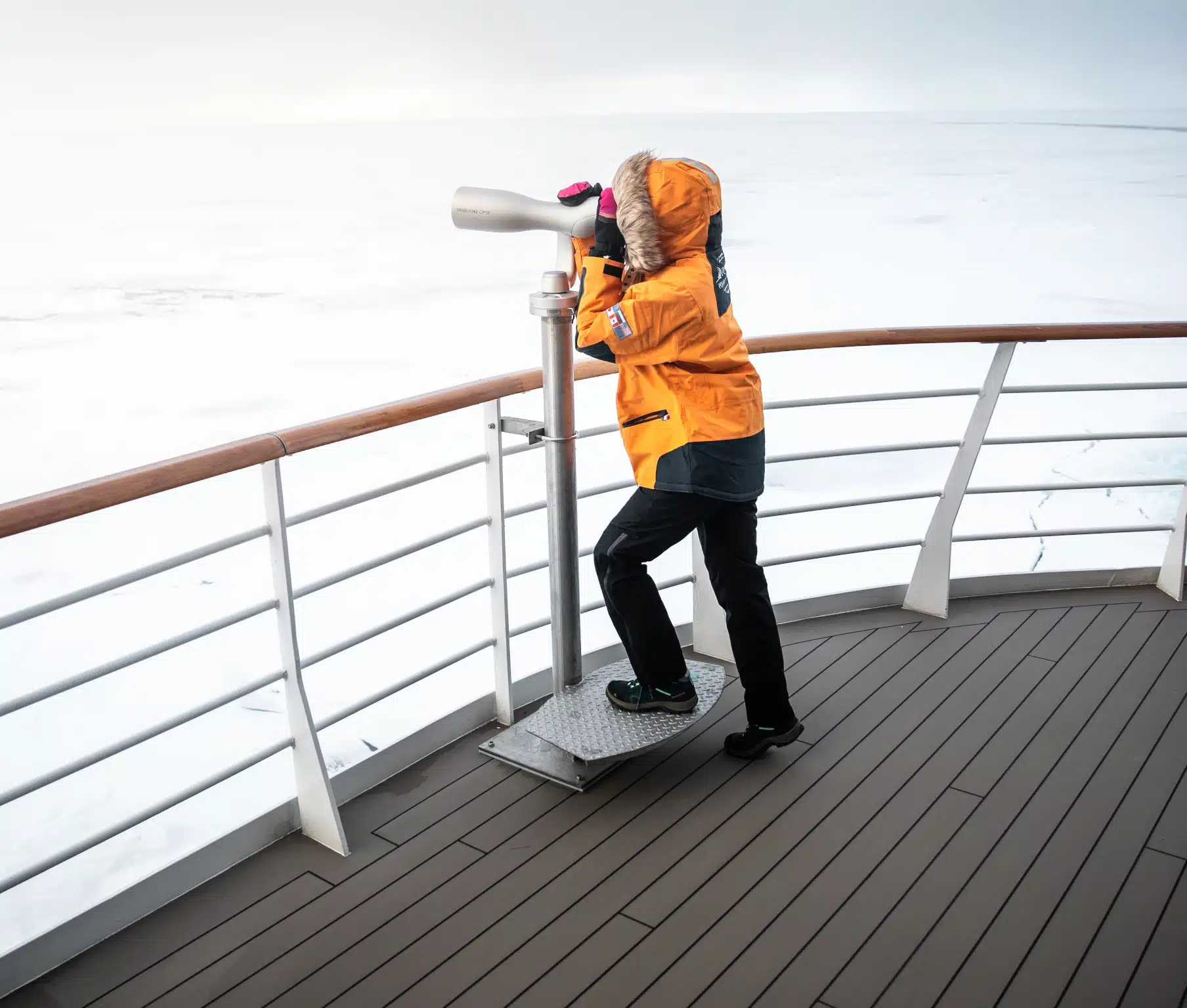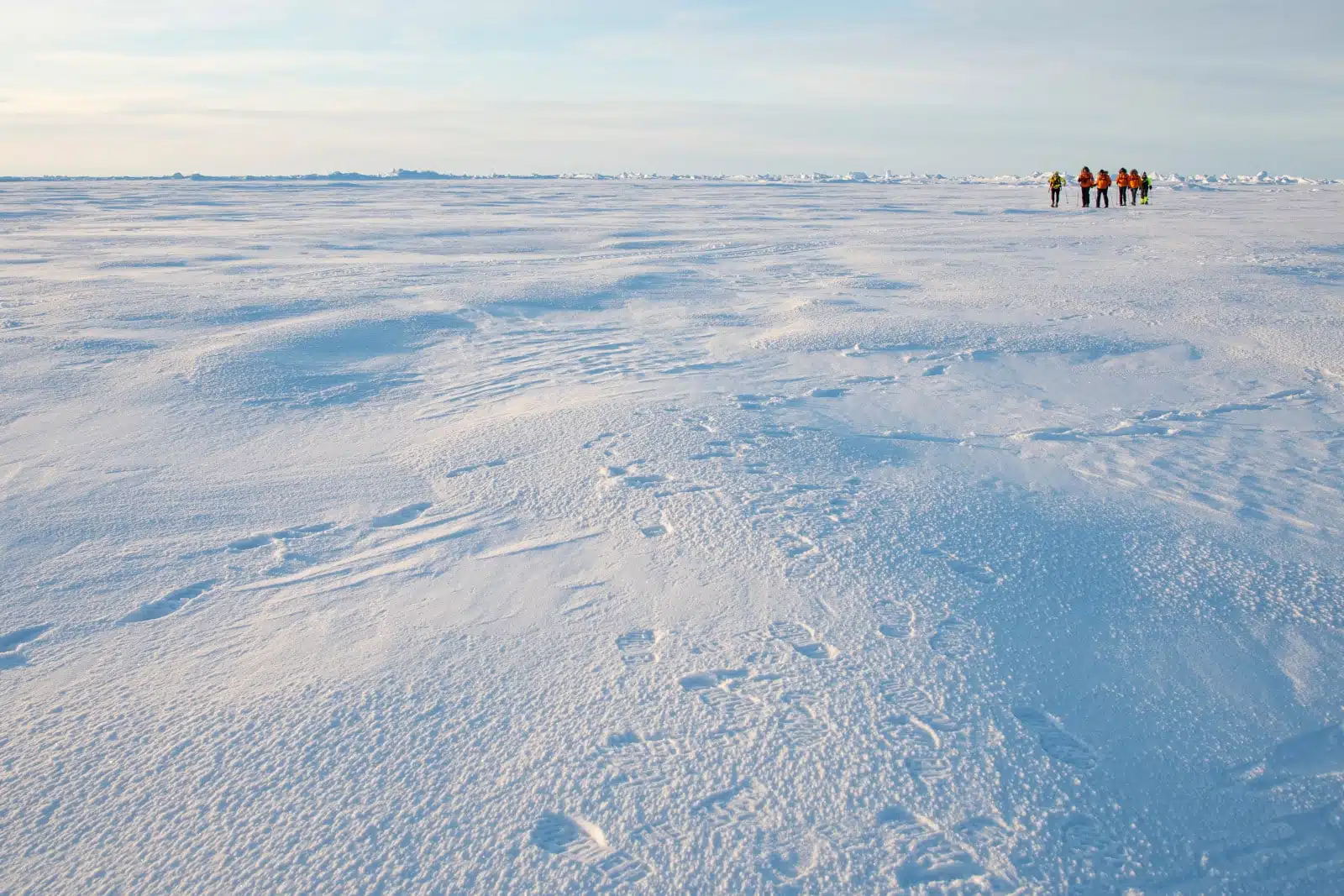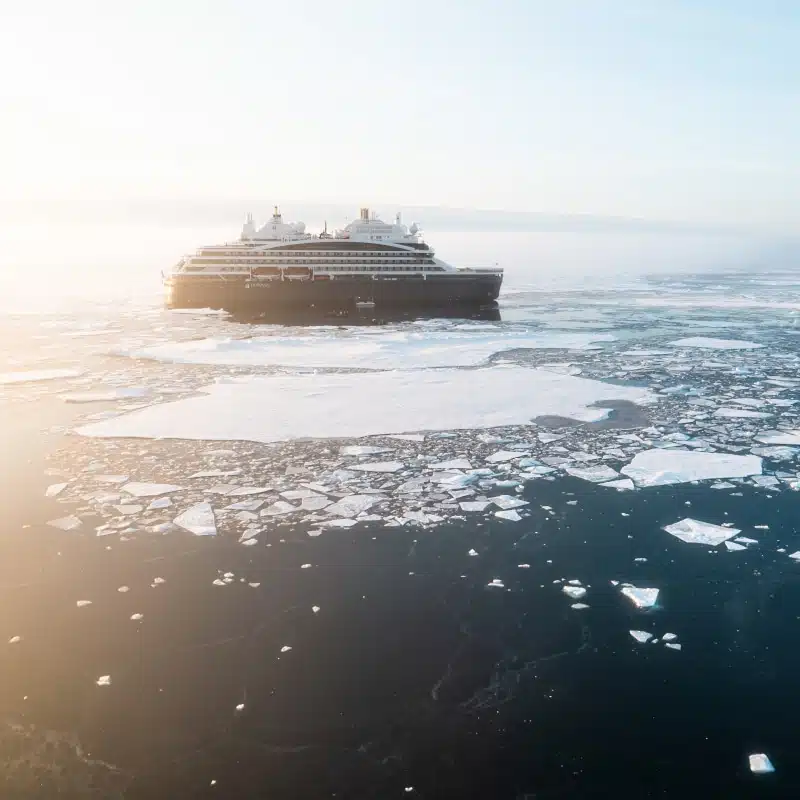Glacial attraction
Located in the northernmost reaches of the world, the North Pole fascinates explorers because of its remoteness and mysterious magnetism. Over the years, many of them have sought to explore the North Pole but failed to uncover all its secrets. Learn more about this extreme yet magnificent area.
Icy splendours
When people picture the North Pole, they often just think of an expanse of ice, an endless flat, white wilderness. Travellers who have been lucky enough to visit the Arctic know that this isn’t true. Arctic landscapes are actually very diverse. Depending on the sea currents, wind and seasons, ice floes form, drift, crack and break up, opening channels of open water or forming polynyas (open water surrounded by sea ice) where the currents are gentler. When sheets of ice collide, they form compression ridges, which can extend several metres above the water surface and up to sixty metres below. The view is constantly changing, right down to the colour of the ice, sometimes white, sometimes blue, sometimes picking up the flamboyant reflections of the dawn or sunset. This subtle symphony never fails to leave a lasting impression.
“You can only see the beauty of the ice floe if you look with your heart.”
Greenlandic proverb
The wildlife that lives in these extreme latitudes, including whales, polar bears, seals, walruses and narwhals, also puts on a good show. These animals all have a thick layer of fat to protect themselves against the cold, and their circulatory systems are concentrated around their vital organs. Some fish in the polar regions even produce a kind of antifreeze!

Geographic pole, magnetic pole
But what is the North Pole, exactly? For geographers, it is a single point where the Earth’s axis of rotation meets its surface in the middle of the Arctic Ocean. Whoever is on this spot is guaranteed to be the northernmost person in the world — provided they keep moving, because the sea ice covering the geographic North Pole is constantly shifting with the wind and currents!
However, there is another definition of the North Pole: the place all the compass needles in the world point to. This point, known as the north magnetic pole, is distinct from the geographic North Pole. It is currently located on Ellesmere Island in Canada, 500 kilometres south of the geographic North Pole. And as it drifts at a rate of several kilometres a year, its location has to be constantly updated. It moves because of variations in the Earth’s magnetic field caused by the movement of ferrous materials beneath the Earth’s crust.
It is vital to know the difference between geographic north and magnetic north if you sail the seven seas. A boat that wants to go straight to the geographic North Pole should not set a course for 0° on its compass but should adjust its direction according to the current location of the magnetic pole. This is why the position of magnetic north is constantly being monitored.

The polar frontier
The remoteness and extreme conditions of the geographic North Pole have fascinated explorers for over a century. Between 1895 and 1986, many tried to reach it on foot or by boat, airship, plane or submarine. However, its location in the middle of shifting sea ice makes it very difficult to reach. As does the difference between geographic north and magnetic north, which makes compasses unreliable. In 1909, the American explorers Peary, Henson and Cook all claimed to have been the first person to reach the True North Pole, but these records are still disputed. It was only relatively recently, in 1977, that the first ship, Arktika, a Soviet icebreaker, reached the geographic North Pole. The following year, Japanese adventurer Naomi Uemura was the first man to reach the North Pole solo on foot with aerial resupply. In 1986, it was the turn of Frenchman Jean-Louis Etienne to plant his flag at the North Pole after a solo skiing expedition pulling a sledge. That same year, American explorer Ann Bancroft became the first woman to reach the North Pole. These feats pushed the limits of human abilities.

“In 1986, there was no GPS, no iridium phones: complete isolation, an intense retreat into yourself. In hindsight, it was a great luxury.
The North Pole is about learning to live with yourself.”
Jean-Louis Etienne
Arctic drift
Some of the sea ice in the Arctic Ocean melts during the breakup, but another older, thicker part remains all year round. However, it is not fixed in place and moves with the currents and ocean circulation and under the effect of the Earth’s rotation. Discovered in the late 19th century, this phenomenon was used by some sailors to get closer to the North Pole, including Nansen aboard Fram, between 1893 and 1896.
Photos credits : © Studio PONANT / O. Blaud ; © J. Fabro

Try to reach the geographic North Pole
Embark on an extraordinary odyssey aboard Le Commandant Charcot



